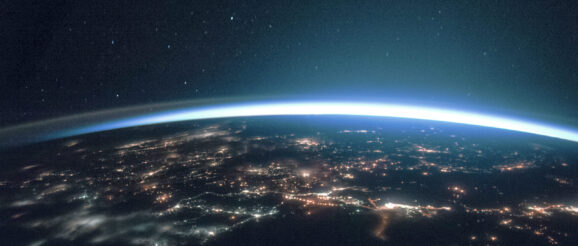Rosh Hashanah: The Birth of Innovation

I recently facilitated an Innovation Workshop for the Midwest NCSY staff as they prepared for the upcoming NCSY year. The team exhibited great synergy, and the atmosphere was electric with creativity. At the workshop’s conclusion, I challenged them not to lose the momentum of innovation generated that day. At the start of a new year, excitement often runs high, but as we settle into our day-to-day routines, that enthusiasm can quickly wane. My challenge to the group was to keep fueling the flames of innovation, particularly as we celebrate the birthday of the most significant innovation ever conceived – the world itself – this Rosh Hashanah.
With Rosh Hashanah upon us, we ready ourselves for profound reflection, renewal, and resolution. Yet, for many, the extra ten minutes we add to Maariv after Ne’ilah on Rosh Hashanah gradually dwindles to five, then three, until we find ourselves immersed once more in the mundane routine of the year. This is a common human experience, and Rosh Hashanah is a vital opportunity to recalibrate our priorities, even briefly. However, I aspire that this year, my additional ten minutes of Maariv endures longer as I delve deeper into the meaning of Rosh Hashanah in a way I have never done before.
Rosh Hashanah commemorates the creation of the world (Rosh Hashana 27a) and signifies our ongoing commitment to its Creator. However, according to the Midrash (Vayikra Rabbah 29:1), the world was created on the 25th of Elul, with Rosh Hashanah falling on the first of Tishri, six days later. So, is it the world’s birthday or not? Indeed, it is, and more so when we consider what or who was created on the sixth day: us!
Before the creation of humanity, the world had elements, vegetation, and animals, all capable of change or creation in some form. Water could transform into ice, plants could reproduce, and animals could procreate, construct, and even engage in artistic expression (Google the Japanese Puffer Fish). Yet, as humans, our capacity to create surpasses all other creations. We possess the ability to choose and create with a level of nuance, depth, and meaning far beyond anything that preceded us. Our human abilities, driven by our unique God-given souls, underscore why the celebration of the world, Rosh Hashanah, occurs on day six, not day one. We are the sole beings capable of creating in a manner reflective of the divine manner in which the world was created. We are the only beings fashioned “B’tselem Elokim,” in the image of God (Genesis 1:26-27), and entrusted with the role of being partners in the world’s ongoing creation.
Rav Soloveitchik (Reflections of the Rav, pp 28-29) asserts, “A Jew must walk in the ways of God. In our context, that principle means that just as God creates and recreates, so should man be prepared to rebuild and reconstruct, even as previous structures collapse.” This is no simple task, and as the Rav continues, “to build initially is difficult, but to rebuild after the destruction of previous achievements is even more challenging. Energies, resources, sleepless nights, and endless devotion painstakingly expended are all gone to waste, uprooted as if by a hurricane. But we are bidden to start over again with faith and resourcefulness, in just the way modeled by God.” In essence, innovation is an emulation of Hashem, and as Rav Kook beautifully writes (Kovetz 4:127), “We innately perceive creation as something that is not yet finished and done, but as something that is always coming into being ” Rabbi Tarfon (Avos 2:16) underscores these concepts, stating, “It is not your duty to finish the work, but neither are you at liberty to neglect it.”
Rosh Hashanah is a time for reflection, repentance, renewal, and recommitment, but above all, it is a time for building and rebuilding, for creating and innovating. This can take various forms, whether it’s our personal spiritual growth and transformation, the impactful work we undertake in NCSY to nurture the potential of Jewish teens, or, as demonstrated by the Midwest NCSY staff, the continual development of fresh approaches to shape the Jewish future and create a better world for generations to come. As stated in Sanhedrin (65b), “If they desire, the righteous can create worlds.” We all possess the potential to be world creators, and as we conclude Ne’ilah this year, my hope is that we persist in generating new ideas and fostering creativity in our personal growth and the crucial work we do.
